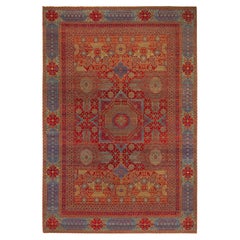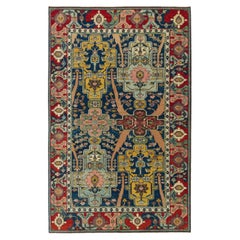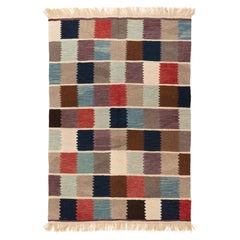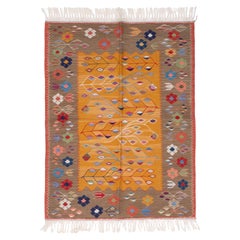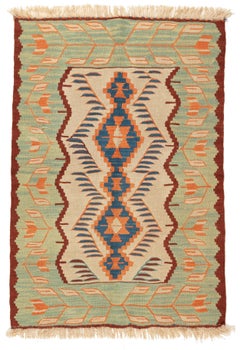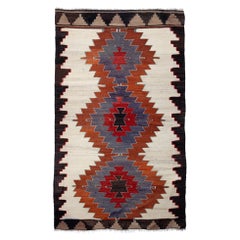Asia - Rugs
21st Century and Contemporary Turkish Revival Asia - Rugs
Wool, Natural Fiber, Organic Material
21st Century and Contemporary Turkish Revival Asia - Rugs
Wool, Natural Fiber, Organic Material
2010s Turkish Kilim Asia - Rugs
Wool, Natural Fiber
2010s Turkish Kilim Asia - Rugs
Wool, Natural Fiber
2010s Turkish Kilim Asia - Rugs
Wool, Natural Fiber
Late 20th Century Turkish Kilim Asia - Rugs
Wool, Cotton, Natural Fiber
Late 20th Century Turkish Kilim Asia - Rugs
Wool, Cotton, Natural Fiber
21st Century and Contemporary Turkish Revival Asia - Rugs
Wool, Natural Fiber, Organic Material
21st Century and Contemporary Turkish Revival Asia - Rugs
Wool, Natural Fiber, Organic Material
Mid-20th Century Turkish Kilim Asia - Rugs
Wool, Natural Fiber
21st Century and Contemporary Turkish Oushak Asia - Rugs
Wool, Natural Fiber, Organic Material
Late 19th Century Turkish Kilim Antique Asia - Rugs
Wool, Natural Fiber
Mid-20th Century Uzbek Oushak Asia - Rugs
Wool, Natural Fiber
21st Century and Contemporary Turkish Revival Asia - Rugs
Wool, Natural Fiber, Organic Material
21st Century and Contemporary Caucasian Revival Asia - Rugs
Wool, Natural Fiber, Organic Material
2010s Indonesian Modern Asia - Rugs
Acrylic
2010s Turkish Kilim Asia - Rugs
Wool, Natural Fiber
Mid-20th Century Turkish Kilim Asia - Rugs
Wool, Natural Fiber
2010s Turkish Kilim Asia - Rugs
Wool, Natural Fiber
Late 20th Century Turkish Kilim Asia - Rugs
Wool, Cotton, Natural Fiber
Early 20th Century Caucasian Kilim Asia - Rugs
Wool, Natural Fiber
Late 20th Century Turkish Kilim Asia - Rugs
Wool, Natural Fiber
2010s Indonesian Modern Asia - Rugs
Wool, Acrylic
Late 20th Century Turkish Kilim Asia - Rugs
Wool, Cotton, Natural Fiber
Early 20th Century Caucasian Oushak Asia - Rugs
Wool, Natural Fiber
21st Century and Contemporary Turkish Revival Asia - Rugs
Wool, Natural Fiber, Organic Material
Mid-20th Century Turkish Kilim Asia - Rugs
Wool, Natural Fiber, Organic Material
Early 20th Century Turkish Kilim Asia - Rugs
Wool, Natural Fiber, Organic Material
21st Century and Contemporary Caucasian Oushak Asia - Rugs
Wool, Natural Fiber, Organic Material
21st Century and Contemporary Turkish Revival Asia - Rugs
Wool, Natural Fiber, Organic Material
Early 19th Century Turkish Kilim Antique Asia - Rugs
Wool, Natural Fiber
Mid-20th Century Turkish Kilim Asia - Rugs
Wool, Natural Fiber
Mid-20th Century Turkish Kilim Asia - Rugs
Wool, Natural Fiber
Late 19th Century Turkish Kilim Antique Asia - Rugs
Wool, Natural Fiber
21st Century and Contemporary Caucasian Revival Asia - Rugs
Wool, Natural Fiber, Organic Material
21st Century and Contemporary Turkish Revival Asia - Rugs
Wool, Natural Fiber, Organic Material
Early 20th Century Turkish Oushak Asia - Rugs
Wool, Natural Fiber, Organic Material
Mid-20th Century Caucasian Oushak Asia - Rugs
Wool, Natural Fiber, Cotton
Early 20th Century Turkish Kilim Asia - Rugs
Wool, Natural Fiber
Late 20th Century Turkish Kilim Asia - Rugs
Wool, Natural Fiber
21st Century and Contemporary Turkish Revival Asia - Rugs
Wool, Natural Fiber, Organic Material
Mid-20th Century Turkmen Oushak Asia - Rugs
Wool, Natural Fiber
21st Century and Contemporary Turkish Revival Asia - Rugs
Wool, Natural Fiber, Organic Material
Early 20th Century Turkish Kilim Asia - Rugs
Wool, Natural Fiber
21st Century and Contemporary Turkish Revival Asia - Rugs
Wool, Natural Fiber, Organic Material
Mid-20th Century Turkish Kilim Asia - Rugs
Wool, Natural Fiber
2010s Turkish Kilim Asia - Rugs
Wool, Natural Fiber
21st Century and Contemporary Turkish Revival Asia - Rugs
Wool, Natural Fiber, Organic Material
Mid-20th Century Turkmen Oushak Asia - Rugs
Wool, Natural Fiber
Early 20th Century Turkish Kilim Asia - Rugs
Wool, Natural Fiber
Late 19th Century Turkish Kilim Antique Asia - Rugs
Wool, Natural Fiber, Organic Material
21st Century and Contemporary Indian Modern Asia - Rugs
Wool
Mid-20th Century Turkish Oushak Asia - Rugs
Wool, Natural Fiber
Late 19th Century Caucasian Kilim Antique Asia - Rugs
Wool, Natural Fiber
Early 20th Century Caucasian Oushak Asia - Rugs
Wool, Natural Fiber
Early 20th Century Caucasian Kilim Asia - Rugs
Wool, Natural Fiber
Early 20th Century Turkish Kilim Asia - Rugs
Wool, Natural Fiber
Mid-20th Century Turkmen Oushak Asia - Rugs
Wool, Natural Fiber
2010s Turkish Kilim Asia - Rugs
Wool, Natural Fiber
Early 20th Century Turkish Kilim Asia - Rugs
Natural Fiber, Organic Material, Wool
